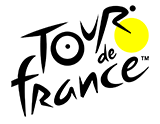He made it out of only six participations. The first year, he was pretty much nowhere to be seen, except maybe for his fourteenth place in the closing time trial, which was an indication of something special for the connoisseurs. It was in 2008. Born a Kenyan, he had become a Brit just a few weeks before the Tour de France. He was in Nairobi for his mother’s funerals when he got the call for an unexpected start in Brest. He was out of shape, as he recalled. He’s gone through hard times. He’s been affected by bilharzias, a tropical disease he picked in Africa. He was out of contract with Team Sky and on the edge of becoming an unemployed cyclist when his destiny was turned upside down during the 2011 Vuelta a España he finished second.
He rode the 2012 Tour de France along with first ever British and Team Sky winner Bradley Wiggins and also finished second. He pulled out on stage 5 with a broken wrist after two crashes. The nickname of his early years as a competitive cyclist was “crash Froome”. Since he came of age in 2013, the equation of the Tour de France seems simple: Froome either crashes or wins.
He crashed twice during the 103rd edition of the race: on the way up to Mont Ventoux on Bastille Day and on the wet downhill of côte de Domancy before the uphill finish at Le Bettex overlooking the Mont Blanc on the third last day. He came unscathed out of both incidents but the image of the yellow jersey running instead of cycling on a distance of 400 metres in the middle of the enormous crowd of the Mont Ventoux will remain in the history. He was a victim of the undisputed popular success of the Tour de France but the commissaires’ panel decided to give him the same time as Bauke Mollema, the rider he bumped into.
The bonus of the judges’ decision due to extraordinary circumstances was 1.41. It didn’t change the outcome of the Tour de France as Froome exited the Alps with an advantage of 4.05 over Romain Bardet. It’s less than the lead of 5.03 he had over Nairo Quintana before travelling to Paris in 2013, but much more than 1.12 that separated him from the Colombian at the end in 2015.
The strength of Team Sky has been a key factor, which is nothing new. The British organization has the economical power and the financial capacities to implement science in sport more than their rivals. There’s no room for improvisation in their process but interestingly, Froome followed his instinct to take power in an unconventional but efficient way in the downhill of Peyresourde. He combined forces with Peter Sagan to show his physical superiority on the flattish and windy roads leading to Montpellier whereas he was widely expected to dominate the Tour in the uphill finishes once again.
One year earlier, his leadership was set at the first summit [La Pierre-Saint-Martin]. The route was different this time around with a softer run in to the mountains, via the Massif Central and the Payolle lake. Froome adjusted his tactics but he won anyway. Humanity was in the air. Hails after the heat in the queen stage of the Pyrenees showcased the riders according to the legend of the “convicts of the road”. The peloton lost a few underdogs: Alberto Contador, Thibaut Pinot… Nairo Quintana was definitely not as healthy and competitive as in the first part of the season. Froome became an excellent spokesman for the peloton following the tragedy in Nice. He handled the situation with dignity, so did the Tour de France in its entirety.
The yellow jersey was full of praise for Romain Bardet’s brilliant conclusion of the three weeks of racing. For the first time, his runner up is a Frenchman. “Vive le Tour et vive la France!”, said Froome – in French – at the end of his speech on the Champs-Elysées in which he dedicated his third triumph to his baby boy Kellan. Very human indeed.












